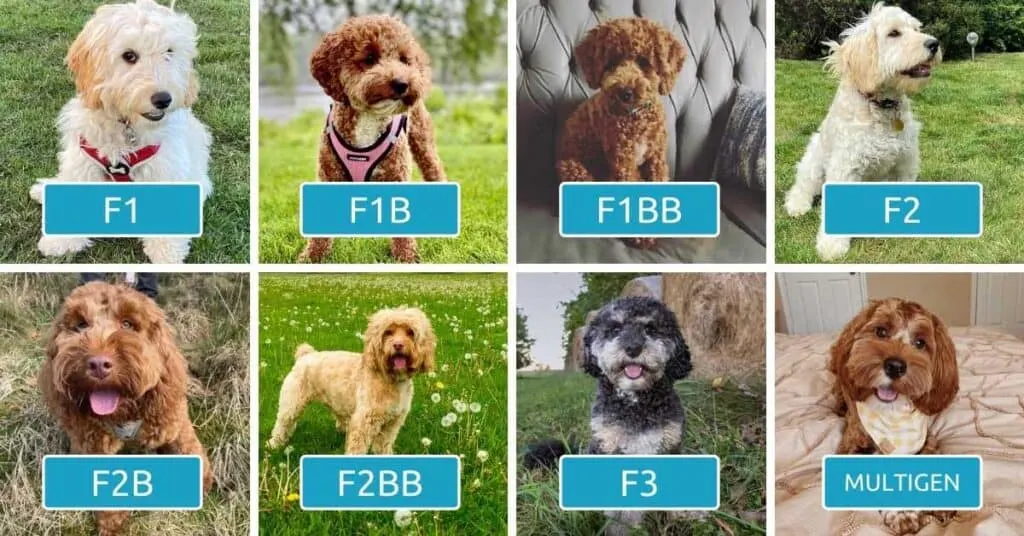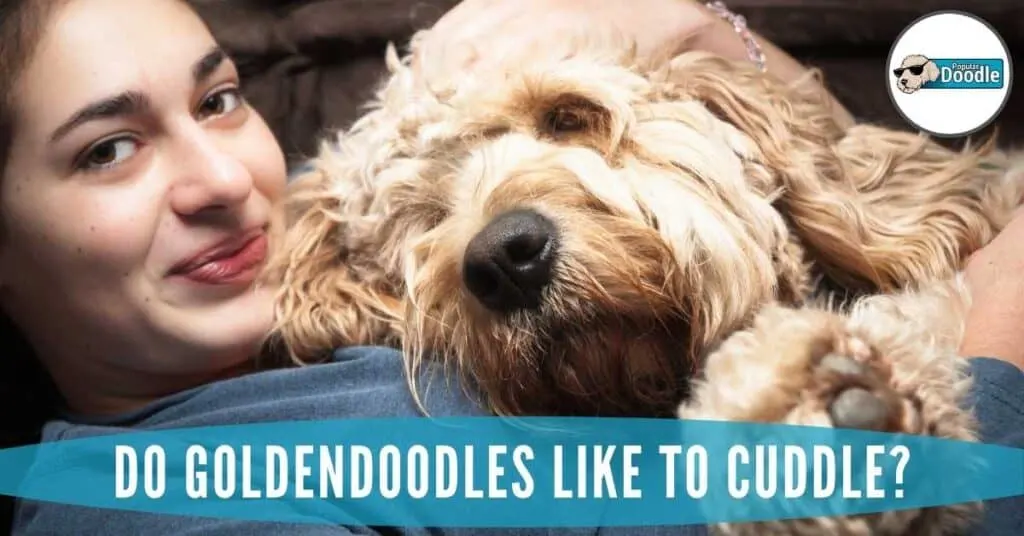By Dr. Merliza Cabriles, D.V.M.

Like ear cropping, Cockapoo tail docking, also known as tail cropping, is a type of elective surgery chosen by some breeders. These procedures have long been practiced in certain breeds like Doberman Pinschers and Schnauzers.
Cockapoo tail docking involves putting the puppy under anesthesia and having the tail cut to a certain length (about a couple of inches) from the base of the tail. If necessary, a few stitches may be used to close the wound.
In many areas, regulations require veterinarians to perform this procedure. However, some breeders choose to do it on their own using ‘crude’ methods without the use of anesthesia.
The parent breeds of the Cockapoo—the Cocker Spaniel and Poodle—are both born with long tails that are typically cropped to conform to breed standards. They undergo tail docking usually within 5 days after their birth.
However, as many people become aware of the health and welfare implications of the procedure, many Cockapoo breeders and owners are choosing to leave their pets’ tails intact.
Related: Cockapoo Health Issues: 10 Common Cockapoo Health Problems to Look Out For!
Is this a crude, inhumane procedure or are there advantages to Cockapoo docking your Cockapoo’s tail? Read on to learn more!
Should You Dock a Cockapoo’s Tail?
Cockapoos are one of the few mixed breed where their own set of breed standards are beginning to form.
According to the American Cockapoo Club, “the tail can be left long or docked like the parent breeds”. This means that regardless of whether you decide to leave your cockapoo’s tail intact or docked, it is acceptable as a breed standard.
These standards go on to mention that, when docked, a Cockapoo’s tail should be exactly 4 inches in length.
Many Cockapoo owners are not aware that their pets were born with their tails intact because when they got the puppy from the breeder, the tail was already docked.
Some breeders continue with the practice of tail docking, yet many Cockapoo owners prefer the long tail—particularly those who are aware of how the procedure is done. For that reason, it’s highly recommended that you talk about the issue with any breeder you’re considering.
Is Cockapoo Tail Docking Painful to Puppies?
Tail docking cockapoo puppies within 5 days of birth continues to be practiced by some breeders because they believed that the nervous system of puppies is not yet fully developed at this time. With an underdeveloped nervous system, it is assumed that the puppy won’t feel any intense pain.
However, this preconceived notion about a puppy’s nervous system is a MYTH. The basic nervous system of a Cockapoo puppy, like any other puppy, is already fully developed at birth. There is scientific evidence that shows sensitivity to pain is similar in puppies and adult dogs.
There are several ways by which Cockapoo tail cropping is performed.
The veterinary procedure involves putting the puppy under anesthesia before the tail is docked. It’s a minor procedure with most puppies going back to their homes on the same day. But in some cases, the veterinarian may release the puppies the next day as a precaution.
An issue raised by some breeders and owners concerning the surgery is the potential side effects of anesthesia, most of which are mild, if any.
There are two common techniques many cockapoo breeders use to remove their puppies’ tails:
The first procedure uses a strong band to tie off the tail and cut off the circulation. Without a blood and oxygen supply, the end of the tail will turn black (dry gangrene) and drop off within 3-5 days.
The second procedure involves clamping off a puppy’s tail tight above the spot where it’s to be cut off. The remaining length of the tail is removed using a pair of surgical scissors or a scalpel. There have been reports, however, that puppies suffer from pain for most of the day. Some pain and discomfort remain for the next few days while the wound is healing.
Is Cockapoo Tail Docking Cruel?
There are both welfare and ethical issues associated with Cockapoo tail docking. Several studies have shown that short-term and long-term effects of tail docking do exist. Important health and welfare issues of docked dogs include the following:
- Even with anesthesia, surgical amputation can still cause acute pain in dogs. Experiencing this noxious stimuli during the very early days of life may negatively impact the normal development of the dog’s central nervous system. This could lead to negative consequences, some of which could be long-term and could affect their quality of life.
- The possibility of complications also exists. These include excessive bleeding, infection, delay in healing, and death of tissues. There have also been cases when dogs suffer from nerve damage that causes them to have chronic pain.
- Some experts believe that the procedure can cause underdeveloped pelvic muscles. There is also a higher rate of incontinence in dogs that are docked.
- A Cockapoo’s tail is an important social tool that is used to interact with other dogs. Some experts believe that docking can impair communication with other dogs as well as with their humans.
Are Docked Tails Illegal?
The American Veterinary Medical Association (AVMA) is against tail docking because of the potential risks that are associated with the procedure. Tail docking Cockapoos, as well as other breeds, is primarily thought of by AVMA to be mainly a cosmetic procedure.
Although there have been several US states that have considered a ban on the procedure, there has been no bill enacted to date. However, tail docking has been banned in some countries like Australia and the United Kingdom because the procedure is deemed unnecessary and compromises dog health and welfare.
For AVMA and these countries, the surgical removal of a dog’s tail can only be said to be “legal” if it’s for medical reasons. In this case, the procedure is not called “docking” but “tail amputation”.
The most common indication for full or partial tail amputation is trauma where repair is not possible or recommended. The procedure is also indicated for tail deformities that can impede a dog’s normal function or movements, or when it can pose an increased risk of injury.
Cockapoo Docked Tails: Pros and Cons
Armed with the right information, Cockapoo owners can make educated and well-informed decisions regarding their pet’s health and welfare. Here are the pros and cons of having your Cockapoo’s tail docked:
Pros
- Hygiene reasons.
- Aesthetic purposes.
- Reduce risks for possible tail damage.
Cons
- Tail docking can cause a substantial amount of pain and discomfort.
- There is an increased risk of infection.
- It can cause long-term chronic pain which is unnecessary and avoidable.
- Dogs with docked tails are unable to communicate well with other dogs and even with their humans.
- Not having a tail, or having an extremely short tail, prevents the dog from wagging which is very important in stimulating the muscles in their rear end, as well as in their legs.
- The dog can have problems walking, swimming, or even sitting down.
- There is an increased risk for the development of incontinence.
The decision to have a Cockapoo’s tail docked or not ultimately lies on the pet owner. For Cockapoos, a docked tail is not a breed standard so both long-tailed Cockapoos and short-tailed Cockapoos can compete in dog shows.
As a result, tail docking a Cockapoo is simply for cosmetic purposes and not medically beneficial or encouraged.
More About Cockapoos…
- Cockapoo vs Goldendoodle: Which is Best for You? (Comparison & Quiz)
- Cockapoo Size Full Grown: How Big Do Cockapoos Get? (Teacup, Toy, Mini, Standard)

Dr. Merliza Cabriles, D.V.M.
Contributing Professional
Dr. Merliza Cabriles is a licensed veterinarian and university professor with many years of experience in food animal and pet companion medicine. Her passion for writing as well as pet parent education and support is echoed in the articles and ebooks she has written.









